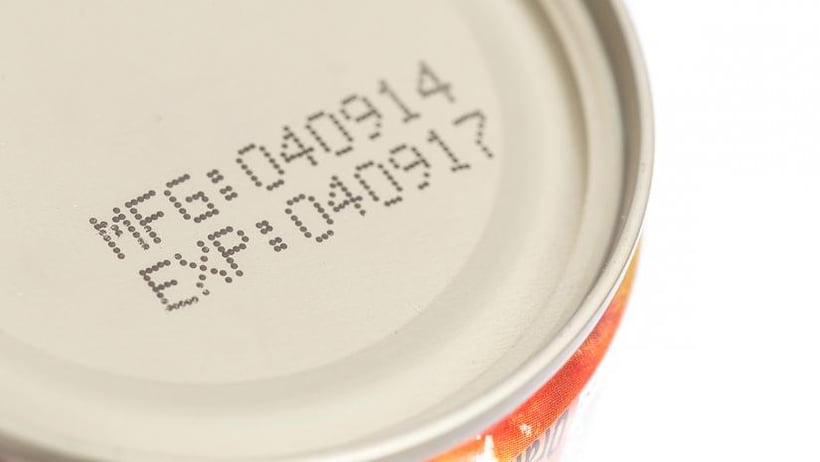
It is the responsibility of a food business to ensure that the food provided to customers is safe to consume. In order to do this, proper food safety protocols must always be adhered to and followed. This includes ensuring that food is not spoiled or expired. Best-before dates, packaging dates and expiry dates are key to knowing what foods are safe to prepare and serve, and which ones should be disposed of. Different types of date markings on packages are used depending on the product.
What is a best-before date?
A best-before date on a food package states when the durable life period of the food ends. According to the Canadian Food Inspection Agency, durable life means “the anticipated amount of time that an unopened food product, when stored under appropriate conditions, will retain its freshness, taste, nutritional value, or any other qualities claimed by the manufacturer.” This date can be found on a package underneath the words “best before” or "meilleur avant".
This date tells consumers that the unopened product should be of high quality until that specific date. The key with this date is that it is dependent upon the product being properly handled and stored based on the requirements of that particular food product. This means that failure to adhere to the guidelines for handling and storing a particular product will affect its quality by the best-before date. This also means that the best-before date no longer applies if a package is opened.
Best-before dates do not guarantee that a food product is safe to prepare and serve to customers. Food businesses must ensure that Food Handler protocols and food safety rules are being followed to ensure a food product is safe for consumption.
Note — the best-before date is not the same as the expiration date.
What is a packaging date?
Packaging dates may be confused with best-before dates as they appear similar. However, packaging dates are displayed on retail-packaged foods with a durable life period of 90 days or less. The packaging date, or “packaged on” date, must be displayed in combination with the durable life period. The durable life period can either be a best-before date or the number of days that the product will retain its freshness.
The purpose of the packaging date, in combination with the durable life information, is to inform the user of how long the unopened product will retain freshness.
What is an expiry date?
An expiry date is not the same as a best-before date. These dates are required on certain foods that have specific nutritional compositions that could falter after the determined expiration date. In other words, after the expiration date has passed, the food may not have the nutrient content as described on the label.
Expiry dates are required for formulated liquid diets, foods sold by a pharmacist, meal replacements, nutritional supplements and infant formula.
If a food has passed its expiration date it should be discarded and not used.
Other wordings to know
Confusion can happen with the different types of dates on the packaging due to different wording. For example, the terms “use by” and "employez avant" are permitted to be used instead of "best before" for prepackaged fresh yeast. However, this date is still required to be presented in the same form and manner as best-before date, even though the wording is different.
Other types of wording used include:
- sell by
- prepared on
- freeze by
- manufactured on
These different wordings are permitted to be used on food products as long as the label meets regulations and requirements.
Food businesses should be aware of these different types of wordings that might be used on packaged food products and what they mean.
Food safety practices
Food businesses must ensure that all food received and stored in the food business is checked for best before and expiry dates. It is essential that food is not only handled and stored properly but also used within the proper time frame.
Food should be stored using the First In, First Out (FIFO) method. The practices under this method include:
- ensuring items that are received first are used first
- moving items nearing their expiration date to the front of the shelves
- clearly labelling and dating containers if food items are not stored in their original packaging
- checking best before and expiry dates frequently
- discarding any food items that show signs of spoilage
All Food Handlers in a food business, especially kitchen managers and staff, should be trained on these key food safety practices. Food safety training is the best way to ensure that these best practices are followed.
Check out the CIFS Food Handler Certification Course for more information on online food safety training.





